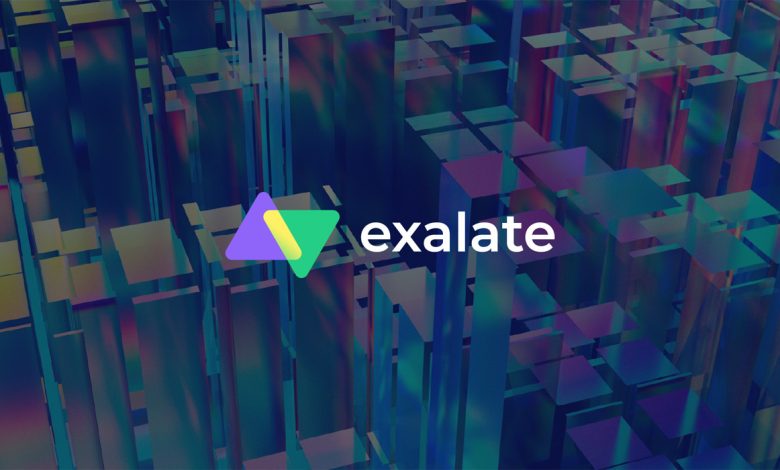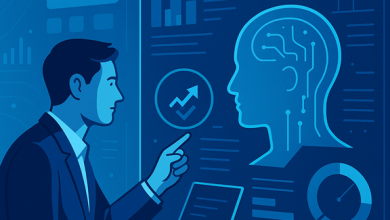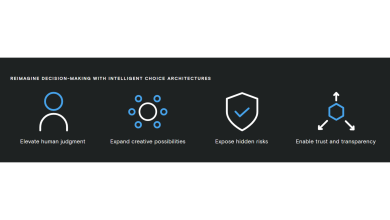
Introduction
Responsible AI is now a standard agenda item in boardrooms. But most organizations struggle to translate principles into practical decisions, especially when it comes to integration that touches critical workflows.
The question isn’t whether to use AI. It’s how much control to hand over, and what happens when something breaks.
Enterprise integration sits at the center of this challenge. It’s the invisible layer that moves data between ITSM, DevOps, CRM, and other systems that keep teams working.
When integration works well, nobody notices. When it fails, projects stall, customers get lost in handoffs, and security gaps open up. Adding AI to this environment can create huge efficiency gains or create new risks that compound quickly.
This article offers a practical framework for using AI responsibly in integration. It’s based on clear rules, visible oversight, and architecture that keeps humans in the loop when it matters.
The goal is simple: make AI a trusted assistant, not an unchecked operator.
The Real Risk in Enterprise Integration
Most enterprise integration happens through point-to-point connections, custom scripts, or middleware integration platforms. These systems move tickets, sync customer records, update project statuses, and trigger workflows. They also touch sensitive data across departments, vendors, and geographies.
When you add AI to these processes, the promise is clear: reduce time spent on manual mapping, adapt to changing schemas, and speed up implementation.
But the risks are just as clear. AI models can hallucinate data, misinterpret sync rules, or apply changes that cascade through connected systems. A single bad sync can corrupt records, expose confidential information, or trigger compliance violations.
The main challenge isn’t the technology itself. It’s the lack of structure around how AI makes decisions.
What Guardrails in AI-Powered Integration Actually Mean
Guardrails in AI-powered integration about defining clear boundaries so automation can run safely at speed.
In enterprise integration, this means four things:
- Rule-based sync constraints. AI should operate within defined parameters. If a field contains personally identifiable information, the system should know not to sync it to unauthorized destinations. If a workflow requires manual approval above a certain threshold, AI shouldn’t bypass that step. Creating a clear integration requirement and planning documentation can help enforce such rules explicitly, making the process auditable in case something goes wrong.
- Limiting AI to known or predictable areas only. Handing over the entire integration plan to AI is a sure recipe for disaster. It’s essential to determine whether a specific integration mapping or workflow requires a complete AI handover or if human oversight is necessary. Usually, AI can handle raw unstructured data and simple field mappings well, but when it comes to complex integration workflows, a human audit becomes necessary.
- Transparent decision-making. Teams need to see what the AI is doing and why. When a sync rule gets suggested or applied, there should be a clear trail showing the logic, the data it used, and the outcome. This transparency builds trust and makes troubleshooting possible when issues arise.
- Human oversight at key decision points. Not every action requires human review, but critical ones do. Changing security permissions, altering customer-facing data, or modifying compliance-related fields should trigger alerts or require approval. The system should recognize these moments and pause for confirmation.
Scenario: When Security Operations Meet Development Workflows
Consider a typical enterprise challenge: security operations teams use one ITSM platform, say ServiceNow, while development teams work in Jira. Vulnerabilities found during audits by the operations team need to flow to the development team, with dozens of custom fields that must map correctly. Manual entry takes hours each week and introduces frequent errors.
Here’s how AI with proper guardrails would handle this scenario differently than traditional automation:
Without guardrails, an AI system analyzes the field structures and automatically creates mappings based on pattern recognition. It starts syncing data immediately. Three weeks later, the security team realizes that severity ratings are being misinterpreted and critical vulnerabilities are showing up as medium priority in the development tracker. By then, hundreds of tickets contain incorrect data.
With guardrails, AI analyzes field structures and suggests mappings based on data types, naming conventions, and semantic similarity. But it presents these as recommendations to the integration team. A security engineer reviews the suggestions, notices the severity field uses different scales in each system, and adjusts the mapping to include proper translation logic. Only after approval does the rule go live.
The AI then applies this rule consistently across thousands of syncs. When a schema change occurs in either system, the AI detects it and flags the affected mappings for review rather than guessing at the correct adaptation. The team maintains full visibility into what data moves where, and audit logs capture every decision point.
Scenario: Maintaining Governance Across Multiple Integrations
Large organizations or service providers (MSPs) often run dozens of integrations across their business. An MSP might have a central ServiceNow instance where tickets are logged in from various customers using their own service desk portal. The same MSP might be using development tools like Azure DevOps to delegate and work on those tickets.
Each connection has different integration and security requirements, data sensitivity levels, and regulatory constraints. Schema changes happen frequently as new customers are added, teams adopt new tools, or modify workflows.
In this complex multi-instance integration environment, sync rules are managed through script-based solutions, since the usual template-based tools fall short.
Adding an AI layer to such script-based tools can not only automate the script generation part but also play a critical role in scaling the integration, since it has the capacity to be contextually aware of the current configuration.
Giving AI this capability of prediction and context in integrations to analyze mappings, suggest rule adjustments, detect anomalies, and analyze sync patterns can increase the value of script-based solutions, where possibilities can become endless.
The system also includes role-based access controls and audit logging for every AI recommendation. When compliance teams need to review what data moved between systems, they have a complete history showing what changed, when, and who authorized it.
It makes human oversight more effective by surfacing issues quickly, providing context for decisions, and maintaining clear accountability.
A Framework for Evaluating AI in Integration
When you’re assessing an AI system for enterprise integration, look past the feature list.
Ask these questions instead:
Can you see the AI’s reasoning? If the system suggests a change or applies a rule, you should be able to see why. Opaque or black-box decision-making is a red flag, especially in systems that handle sensitive data or cross compliance boundaries.
Are there enforceable limits? The AI should respect predefined rules about data security, field permissions, and workflow requirements. If it can override these without human approval, you don’t have guardrails, you have hope.
Who owns the outcome? When something goes wrong, there should be a clear chain of accountability. If the AI made a decision, that decision should be traceable to a person who authorized the rule or approved the action.
Can you audit what happened? Integration systems need detailed logs showing what data moved, what rules applied, and what changed. This isn’t optional. It’s essential for troubleshooting, compliance, and continuous improvement.
Does it support gradual adoption? Responsible AI implementation isn’t all-or-nothing. You should be able to start with AI-assisted recommendations, test them in limited scenarios, and expand as confidence builds. Systems that require full automation from day one carry unnecessary risk.
This framework helps you separate AI that’s ready for production from AI that’s still a science project.
The Role of Integration Architecture in Setting AI Guardrails
Guardrails don’t exist in a vacuum. They need supporting architecture that makes governance practical at scale. This means separating the AI layer from the execution layer, so recommendations can be reviewed before they run.
It means implementing role-based access so different teams and admins can set different rules. It means building audit trails into the system, not bolting them on later.
Secure architecture also matters. AI models often require access to data schemas, field mappings, and historical sync patterns. That information can reveal sensitive business logic or expose system vulnerabilities. The AI should operate with least-privilege access, seeing only what it needs to make recommendations and nothing more.
Finally, architecture should support versioning and rollback. When a rule change causes problems, you need a fast way to revert without cascading failures. AI can help identify issues quickly, but the system needs to support rapid recovery or integrated fail-safe mechanisms when things go wrong.
Common Pitfalls to Avoid
Organizations implementing AI in integration often make predictable mistakes.
Understanding these helps you design better guardrails from the start.
Pitfall 1: Trusting AI to understand business context. AI can recognize patterns in data structures, but it doesn’t understand why certain fields matter more than others. A customer ID and an internal tracking number might look similar to an algorithm, but mixing them up has very different consequences. Business rules need to be explicit, not assumed.
Pitfall 2: Optimizing for speed over safety. The promise of instant deployment is tempting, but integration errors compound quickly. Taking time to review AI recommendations before they go live prevents problems that take weeks to untangle. Speed matters, but not at the cost of data integrity.
Pitfall 3: Treating all integrations the same. A sync between internal development tools carries a different risk than a sync that touches customer data or financial records. AI systems need to recognize these distinctions and apply appropriate levels of oversight based on data sensitivity and business impact.
Why Responsible AI Matters Now
Enterprise integration is getting more complex. Organizations run more systems, work with more partners, and face stricter compliance requirements.
Traditional integration methods don’t scale, same as with unchecked script-based integrations.
Using AI responsibly offers a middle path: systems that can adapt to change, reduce manual work, and improve accuracy, if they’re built with the right constraints.
The organizations getting this right aren’t the ones with the most advanced AI. They’re the ones who’ve defined clear boundaries, built transparent processes, and kept humans accountable for critical decisions.
Responsible AI in integration isn’t about slowing down. It’s about moving fast without breaking things that matter.
How to Implement AI in Enterprise Integrations With the Right Guardrails
If you’re responsible for enterprise integration, start by auditing your current setup. Identify where manual work creates bottlenecks and where automation introduces risk.
Look for opportunities where AI can help, like understanding the context, suggesting mappings, detecting anomalies, and adapting to schema changes, without requiring full autonomy.
Then define your guardrails.
- What rules must never be broken? What workflows should always be followed?
- What underlying system constraints should never be violated?
- What decisions require human approval?
- What level of transparency do you need for compliance and troubleshooting?
Build these requirements into your evaluation criteria before you commit to an integration platform.
Finally, test incrementally. Start with non-critical workflows, measure the results, and expand based on real outcomes rather than vendor promises. The goal is to build confidence in the system’s ability to operate within boundaries, not to prove the AI can do everything.
Conclusion
Responsible AI in enterprise integration comes down to structure, not sentiment. It requires clear rules that define safe operation, transparent systems that show what’s happening, and an architecture that keeps humans accountable when it matters.
Enterprise integration touches critical workflows and sensitive data. Adding AI without guardrails amplifies risk. Responsible AI requires rule-based constraints, transparent decision-making, and human oversight at key points.
Opt for a hybrid approach such that easy or predictable mappings or rules can be implemented via AI-powered integrations, while critical or sensitive business processes still require human oversight.
The organizations succeeding with AI aren’t gambling on black-box automation. They’re building systems where AI assists within defined boundaries, humans make critical calls, and governance stays intact even as complexity grows.
With a tool like Exalate, you can use the power of AI to expand the connection possibilities and create a network of connected systems.
About the Author

He co-founded iDalko in 2011, scaling it to 90+ employees and 2,000+ customers before its 2023 acquisition.
With over 10 years of experience in enterprise integrations and nearly two decades in engineering leadership roles at companies including EMC and Q-layer (later acquired by Sun Microsystems), Francis brings a practitioner’s perspective on how AI can transform workflows without sacrificing governance or control.



